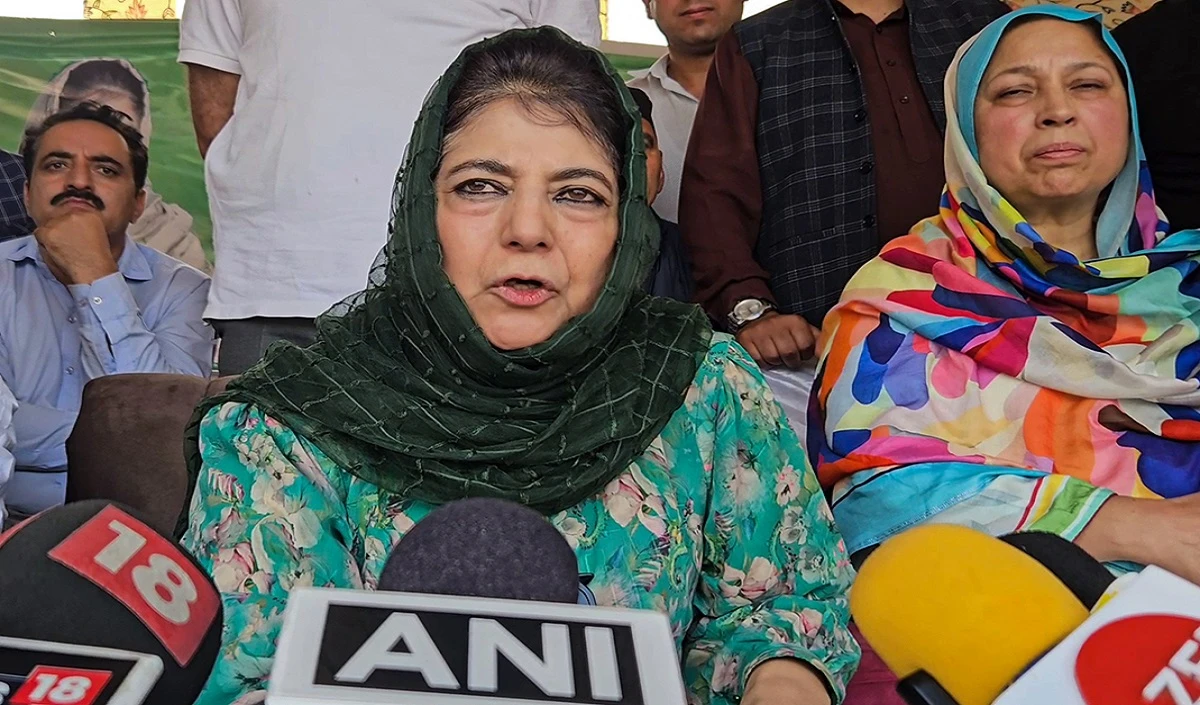In January 2024, when sunrise occurred in the holy city of Ayodhya. The faded prayer for centuries was now finally buzzing. Shri Ram’s Pran Pratishtha was not just a religious achievement in his Ram temple. It was a moment of salvation of civilization. After centuries of invasion, colonial deformity and political delay, this temple was echoed in sandstone, echoing with mantras and vibrations of history. It was not just about architecture, it was about the treatment of an injured soul. Shri Ram’s return to his birthplace rejected the faith of the nation, which had kept the silence of exile in his heart for a long time.
A few months ago, another symbol of India’s ancient faith quietly returned to its right place. During the inauguration of the new Parliament, Prime Minister Narendra Modi established the Sangs. It is a sacred scepter, which was presented to Jawaharlal Nehru in 1947 to mark the religious transfer of power. For decades, it was forgotten, deprived of a proper place, and was rejected as a popular scepter. Its establishment was not just the task of remembrance – it was a powerful declaration that India would no longer look at itself with borrowing eyes. Sangs represented the reign of righteousness, not the remains of the empire. It was an important embrace of India’s own state art and spiritual traditions, which was ignored for a long time in the later order of colonialism.
Also read: Prime Minister Modi’s Cyprus visit gave a strong message to anti -India forces
Not only this, these moments indicated a deep cultural renaissance. It will emerge in eleven transformative years as a civilized activity.
It was clear from the beginning in 2014 that culture under the Modi government will no longer be decorative, but it would be fundamental. International Yoga Day was first celebrated in 2015. Now millions of people around the world are seen celebrating an ancient Indian tradition, which connects the body, mind and soul among themselves. Yoga is not only a health routine, but it has also become India’s largest cultural export in the last few years.
The revival of traditional knowledge systems through the Ministry of AYUSH was given institutional emphasis. As a result, Ayurveda, Yoga, Unani, Siddha and Homeopathy helped to reach national and global forums. Parallelly, the government launched missions to preserve classical languages like Sanskrit, Tamil, Pali and Prakrit, promote the digitization of manuscripts and support endangered folk arts and crafts under schemes like Ustad and our heritage.
Historical buildings of India also got a new life. The unveiling of the Statue of Unity in 2018 was not only about the prevalence, but was re -distinguished by a saga. Sardar Vallabhbhai Patel was disappearing for a long time. He was put in front of the national memory. Changing the name of Rajpath to the path of duty was a symbol of a decisive change. It was also a symbol of change from colonial symbolism to native accountability.
Perhaps no diplomatic dialogue reflects this change in Mahabalipuram, Tamil Nadu, compared to the 2019 informal summit between Prime Minister Narendra Modi and Chinese President Shri Xi Jinping. Away from the corridors of Delhi, the city of ancient port, which once became a rich center of the Pallava dynasty and the Indo-Chinese maritime relations, became the backdrop of negotiations between two civilizations. When the leaders walked between temples and stone chariots built by cutting the rocks, India presented not only geography, but not only history and protocol, but also the heritage. It was soft power in its most subtle and strongest form.
This cultural ethos also flowed into India’s global diplomacy through other methods. Prime Minister Narendra Modi presented a million toys for children from Patta Painting to children as a state gift, who took messages from artisans and timeless traditions of India with them.
In 2023, the G20 presided over another cultural achievement. Not limited to Delhi’s diplomatic hall, this summit became an all -India festival of cultural identity. From tribal art demonstrations to classical demonstrations, India not only demonstrated its policy depth, but also its soul. Every delegation was immersed in India’s colors, cuisine, crafts and consciousness. The message was clear: India is not the civilization of the past – it is a lively, strong and confident global civilization.
During these years, more than 600 stolen artifacts were brought back from foreign museums and collectors, including sculptures, inscriptions, and manuscripts. The return of each of these was not only the art but also the restoration of respect. Similarly, Veer Children’s Day was established to remember the martyrdom of Guru Govind Singh’s heroic Shahzadas, while Tribal Gaurav Day brought tribal freedom fighters to the national center.
The epidemic also could not redeem the cultural flame. Through the virtual concert, Digital Museum Tour and “Mann Ki Baat”, the Prime Minister ensured that arts, stories and cultural pride were also wreath in the solitude of the lockdown.
All of them were absorbed in the campaign like “Vikas Bhi, Heritage Bhi” slogans. This is a call that emphasizes economic development with cultural pride. Under the Modi government, this slogan was not just rhetoric. This defined a new vision. A vision, which contains GDP growth, digital infrastructure and defense modernization, temple renovation, tribal pride and saga of civilization.
India does not revolve around its identity today. It moves forward without any regrets and confidence. Cultural nationalism has emerged as a binding power of progress, which was once rejected as a regressive. In the BJP’s ideological compass, culture is not just a accessory, but axis.
In these eleven years, the Modi era has not only kept the cultural policy into consideration, but has also awakened the cultural consciousness. What started as restoration became a resurrection. Those who were once neglected as memories of the past have all become the centers of national identity.
The Ram temple and the 7 will always remain symbolic symbols, but the depth of heritage lies in a collective feeling. India’s future will be the most bright when he remembers where he came from. We are not just a country with a long history, but we are a long memory living civilization. And in that memory, under the supervision of religion, India has again received its voice.
– Gajendra Singh Shekhawat,
Union Minister of Culture and Tourism, Government of India



